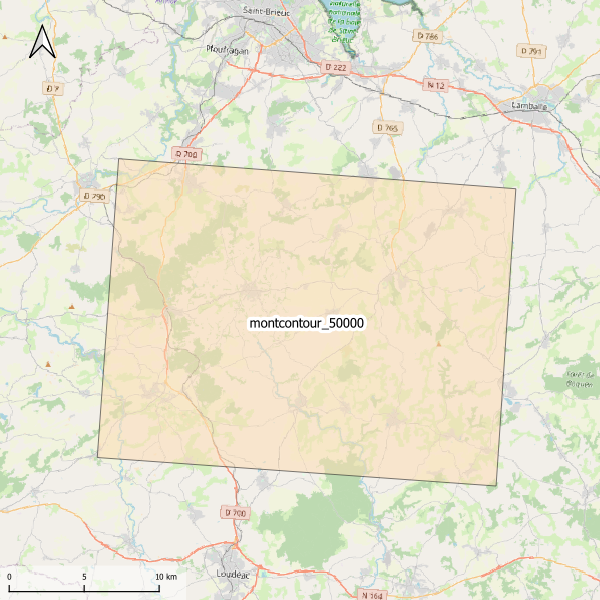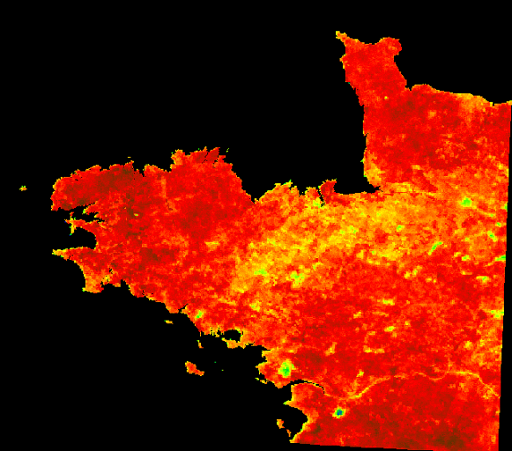Type of resources
Available actions
Topics
Keywords
Contact for the resource
Provided by
Years
Formats
Representation types
Update frequencies
status
Service types
Scale
Resolution
-

Les barrages sont à l’origine de modifications significatives du régime hydrologique, de la température de l’eau et des flux biologiques et biogéochimiques. C’est le cas des barrages de Vezins et de la Roche qui Boit, présents sur le cours principal de la Sélune, et d’autres plus petits obstacles qui fragmentent le bassin versant de la Sélune. Cette couche représente les barrages hydroélectriques de la Sélune, avec les batiments associés, en lien avec la production électrique. La géométrie de ces polygones est issue de plusieurs sources : BD Topo, OpenStreetMap (de 2019), complétée par photointerprétation. Des informations extraites du livre « Quand les rivières reprennent leur cours – Notes sur l’effacement de barrages et de seuils, sur la Sélune et ailleurs » ont été ajoutées pour décrire l'état (en service ou arasé), la nature et les caractérisques physiques de ces barrages.
-

-

Emprise de la carte pédologique de l'Île-de-Bréhat au 1/10000. La donnée de base, au format image scannée, n'est pas publiée.
-

L’effacement des barrages de la Sélune a pour objectif de restaurer les écosystèmes aquatiques dans le bassin versant et les populations animales et végétales aquatiques. Une des conditions du succès de l’opération est la réapparition de formes fluviales diversifiées et d’habitats aquatiques diversifiés. Idéalement, le cours d’eau reprendrait son tracé et sa dynamique initiale. Cependant, la nécessaire gestion des sédiments a impliqué des interventions humaines de degrés variables selon les secteurs, avec des conséquences probables sur la morphologie du cours d’eau (sinuosité, géométrie) et sur la nature du substrat du lit (granulométrie). La lamproie marine et le saumon, candidats à la recolonisation, façonnent le substrat des cours d’eau en construisant des nids où ils déposent et recouvrent leurs œufs. Cette activité peut significativement et durablement modifier la répartition des sédiments dans les zones de reproduction et augmenter la complexité des habitats aquatiques. Le projet « rôle des espèces ingénieures dans la restauration des habitats » étudie l’influence de ces deux espèces de poissons migrateurs sur la mobilité des sédiments et la morphologie du cours d’eau dans leurs zones de reproduction. Comprendre le rôle de ces espèces est important pour suivre la restauration de la vallée de la Sélune après sa remise en continuité et le retour des grands migrateurs. Cette couche donne la localisation des secteurs d'étude utilisés dans le cadre du projet de recherche "Espèces ingénieures" ("rôles des espèces ingénieures dans la restauration des habitats").
-

Emprise de la carte pédologique de Montcontour au 1/50000. La donnée de base, au format vectoriel, n'est pas publiée.
-

Emprise de la carte pédologique de l'Île-d'Houat au 1/25000. La donnée de base, au format image scannée, n'est pas publiée.
-

Occupation des sols 2016 du bassin versant du site de Naizin dans le Morbihan dans le cadre de l'Observatoire de Recherche en Environnement (ORE) AgrHyS d'INRAE. Le parcellaire est issu du cadastre de 2013. Les dessertes ont été redessinées à partir des orthophotos IGN de 2013 et le parcellaire a été découpé en fonction d’une zone tampon autour de ces dessertes. Les parcelles 2013 peuvent être découpées mais jamais regroupées. Toutes les entités géographiques élémentaires ont un identifiant unique sur l’ensemble des années. Champs de la table d’attribut : • ID_2016 : identifiant de la parcelle pour l’année 2016 • TYPE_16 : code principal de l’occupation des sols • S_TYPE_16 : code secondaire de l’occupation des sols • ID_PARCEL : Identifiant numérique et non significatif par parcelle du RPG 2016 • CODE_GROUP : code du groupe de cultures du RPG 2016 • CODE_CULTU : code du groupe de cultures majoritaire du RPG 2016 • CULTURE_D1 : code de la culture dérobée (culture intercalée entre 2 moissons de culture principale) sur la parcelle. • CULTURE_D2 : code de la seconde culture dérobée (culture intercalée entre 2 moissons de culture principale). La nomenclature de ces codes des types et sous-types a été définie dans le programme ANR-12-AGRO-0005 MOSAIC : https://anr.fr/Projet-ANR-12-AGRO-0005. Leurs descriptions peuvent être télécharger ici : https://geosas.fr/metadata/ore/xls/legendes_osol_naizin.xlsx. Les occupations des sols sont issues des données par parcelles du Registre Parcellaire Graphique (RPG) de l’année 2016. Les limites des parcelles ont été mises en concordance avec le parcellaire de 2013.
-

Flow domain and catchment boudaries. Example used in: Thomas Z., Rousseau-Gueutin P., Kolbe T., Abbott B.W., Marçais J., Peiffer S., Frei S., Bishop K., Pichelin P. , Pinay G., J.R. de Dreuzy, Constitution of a catchment virtual observatory for sharing flow and transport models outputs, Journal of Hydrology, Available online 5 May 2016, ISSN 0022-1694, http://dx.doi.org/10.1016/j.jhydrol.2016.04.067.
-

Modèle Numérique de Terrain (MNT) à 5 mètres de résolution calculé par rééchantillonage basé sur la méthode de la médiane de la donnée Litto3D à 1 mètre de résolution. L'emprise géographique du MNT contient l'ensemble du site de l'Observatoire de Recherche en Environnement (ORE) AgrHyS de Kerbernez à Plomelin dans le Finistère.
-

L'Evaporative Fraction (EF) est un indice permettant d'avoir une connaissance relative des zones à fort potentiel hydrique, et inversement, par l'estimation de la capacité d'un sol à évaporer. Cette capacité s'estime via des valeurs allant de 0 (non évaporante) à 1.26 (très évaporante).
 Catalogue GéoSAS
Catalogue GéoSAS